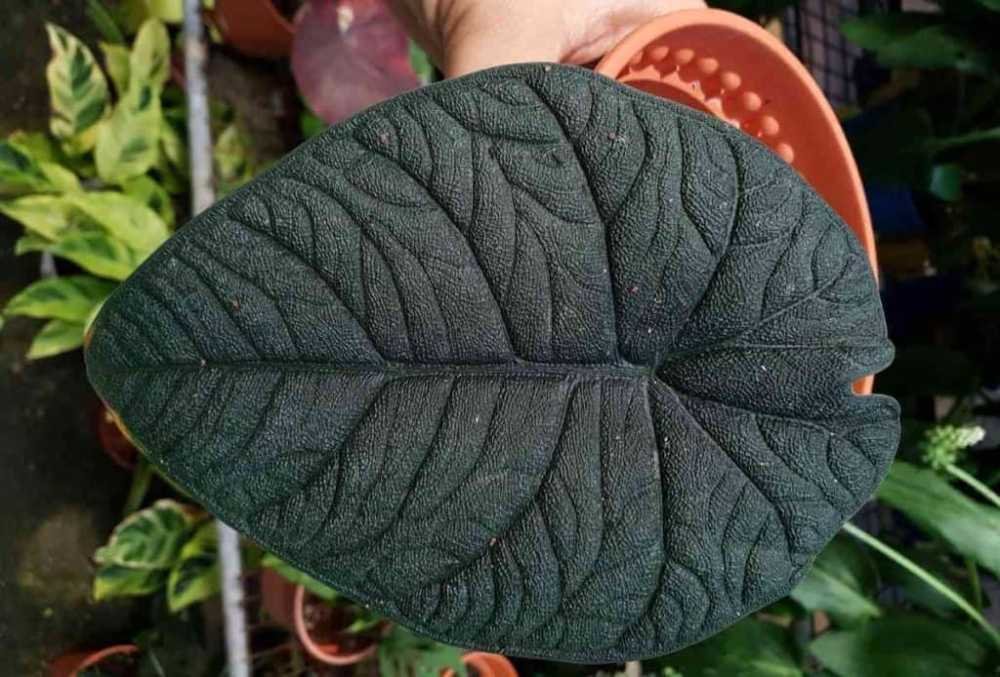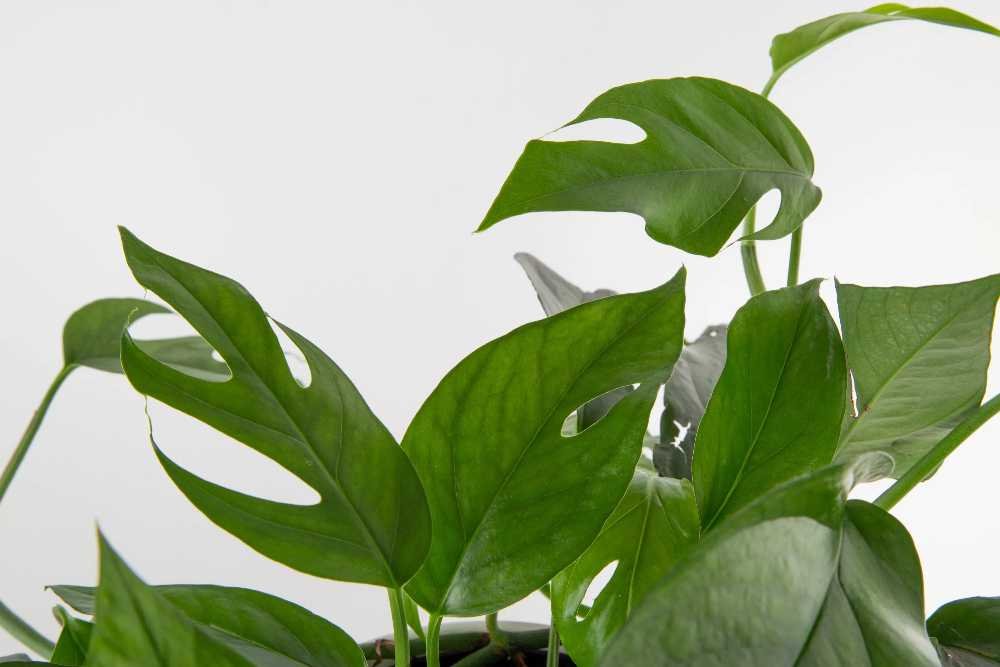Pothos plants, commonly known as Devil’s Ivy, are tropical plants from Southeast Asia. They are popular houseplants known for their climbing growth patterns and lush green leaves that may come in various variegations. If you have a Pothos plant, water it every one or two weeks to promote proper root development and healthy, beautiful foliage. It is best to allow the soil to partially dry between watering sessions.
Also, check the moisture level of the top soil. If it feels dry, it is time to quench your plant’s thirst. Water your Pothos plants. Read on for more information on how often to water Pothos plants and learn a few tips to help you adequately meet your plant’s watering requirements.
Factors Affecting the Frequency of Watering Pothos Plants
Numerous factors determine how often to water your Pothos plants. Therefore, it is useless sticking to a routine or calendar, such as watering twice a week. This is because the plant’s watering needs vary depending on various factors such as time of the year, environmental conditions, and even the type of soil and age of the plant.
As such, it is advisable to ditch a watering schedule and listen to your plant’s needs to ensure you do not overwater it or deprive it of water. To help you hydrate your indoor plant correctly, here are a few factors that determine the frequency of watering your Pothos plant.
1. Plant size
The size and age of your Pothos plants inform how often you water them. Younger or newly-propagated plants require more water due to an underdeveloped root system, which makes them unable to take in too much water. Bigger and more mature plants have more established root systems, meaning they can endure longer periods between watering.
2. Pot size and Type
Pothos plants in large pots require less frequent watering than those in smaller pots. This is because larger pots have more soil volume, which can hold more moisture, reducing the need for regular watering. Smaller pots, on the other hand, dry out faster, requiring you to water your plant more often.
The type of pot also determines how often to water Pothos plants. Terracotta and clay pots are porous, allowing water to evaporate. This means you will water the plant more frequently than the one in a plastic pot.
3. Environmental conditions
Even if your plant is indoors, environmental conditions like temperature and humidity can affect your watering frequency. High temperature and low humidity levels increase evaporation rate, causing your Pothos plant to lose water much faster leading to more watering requirements.
4. Soil Type
Pothos plants love well-draining soil with water retention abilities. The soil should not be waterlogged. With this in mind, the content of your potting mix can be the reason you water more often or not. Soils with perlite and peat moss promote aeration and moisture retention, meaning you will water less frequently than a potting mix without them.
5. Seasons
The growth stage and season can impact your watering frequency. During spring and summer, Pothos plants grow actively and require more water to support them. It is important to check the soil at least twice a week to ensure you provide adequate moisture during this stage.
When Pothos plants enter dormancy in winter and fall, their water requirements also drop. This means less frequent watering as they hate continuously moist soil.
6. Light
Plants in spots with high light intensity grow much faster, increasing the need for watering to ensure proper growth. If you place your Pothos in a location with low light, it will grow much slower and require less watering.
Signs That Your Pothos is Overwatered or Thirsty
Understanding how your Pothos plant behaves when it has had too much water or too little can make all the difference in its growth, health, and vibrancy. Fortunately, you can easily read your plant’s behavior by observation.
Doing so allows you to adjust how often you water your Pothos plant based on the plant’s behavior. To make it easier for you, below are signs of overwatering and underwatering to look out for.
Symptoms of Overwatering
Although water is necessary for the plant’s growth, health, and beauty, overdoing it can lead to serious consequences that put your Pothos plant at risk. If you are not sure whether you are providing enough or excess water to your Pothos plants, below are signs that you are giving them too much water.
- Brown leaf edges
- Mold on the soil surface
- Mushy, shriveled leaves
- Yellow leaves
- Wilting, curly leaves
- Root rot
- Edema (blisters on the leaves and stems)
Symptoms of Underwatering
If you leave your Pothos plant too long without water, it will suffer and become weak. Below are signs that you are underwatering your Pothos plants.
- Crispy, brown leaves
- Leaf drop
- Wilted leaves
- Wrinkled leaves
- Plant shrinkage
- Wrinkled leaves
Why You Should Avoid Overwatering and Underwatering Your Pothos Plant
While both overwatering and underwatering are detrimental to Pothos plants, you would rather underwater than overwater. This is because plants are better equipped to recover from dehydration. Overwatering not only causes root rot, it also encourages fungi and bacteria growth, which leads to diseases. Too much water also prevents oxygen from reaching the roots, hindering the plant from performing vital functions.
Similarly, underwatering causes dehydration and reduces the plant’s ability to intake nutrients from the soil. This results in nutrient deficiency and ultimately, poor growth. Dehydration also weakens the plant’s ability to recover and increases its vulnerability to pests and diseases.
The beauty of a Pothos plant rests in its foliage. Underwatering damages the leaves by causing them to be crispy, dry, and even fall off. This reduces the overall beauty of your plant as it sheds leaves to conserve whatever moisture and nutrients it can get.
How Often to Water Pothos: Guidelines to Follow
Use the following guidelines to help you water your Pothos plant appropriately.
Ideal Soil Moisture Level for Pothos
Pothos plants thrive in soil that is moist but not saturated. As such, you should hydrate the soil adequately without allowing it to be waterlogged. The soil near the plant’s base should be damp when you touch it with your finger, not overly wet or bone dry.
It’s crucial to prevent waterlogging, as excessive moisture causes root rot, among other issues. If you notice that the soil is always saturated or water pools on the soil surface, quit watering for a while until it dries out.
Allowing the top of the soil to dry before watering helps maintain moisture balance and prevents overwatering. However, do not let the soil completely dry to avoid dehydration and stress on the plant.
Frequency of Watering
Water your Pothos plant once every 1-2 weeks. However, it’s crucial to assess the plant’s specific needs and correct the watering frequency accordingly. Also, monitor the soil’s moisture level to know when to water the plant.
Remember, you are better off underwatering the Pothos plant than overwatering it since it can tolerate dehydration better than excess moisture.
Watering Techniques for Your Pothos Plant
There are two main methods for watering your Pothos plant; top watering and bottom watering.
(i) Top watering
This is the most common and straightforward method of watering Pothos plants. It involves pouring water directly onto the soil surface until it drains from the bottom. Top watering is the best way to water your Pothos plant since you can monitor the soil moisture and visually know when the plant has received enough water. It also prevents mineral and salt buildup as the water flows thoroughly through the soil.
Ensure the pot has adequate drainage holes to prevent waterlogging and root rot. Also, take care not to pour water directly onto the leaves, as it increases the plant’s risk of fungal diseases.
(ii) Bottom watering
Bottom watering involves placing the pot in a tray or container full of water and letting the plant absorb water through the drainage holes at the bottom. Allow the plant to sit in the water for at least half an hour or until the soil is sufficiently moist.
You can consider bottom watering if you tend to overwater as this method allows gradual water intake. It also prevents spills. If you have plants with delicate or sensitive leaves, consider bottom watering as it minimizes splashes.
How to Check If Your Pothos Needs Watering
Checking the soil’s moisture level is the most effective way to determine if your Pothos plant needs watering. Here are a few ways to know if you need to water your Pothos plant.
Finger method: Stick an inch of your finger into the soil near the base of the plant. If the top inch of soil feels dry, it’s time to water your Pothos.
Moisture meter: Insert the moisture meter into the soil near the plant’s root zone and check the moisture reading. Use the manufacturer’s instructions to determine whether your Pothos plant requires watering.
Observation: Observe the plant for signs of underwatering, such as wilting and dry, crisp leaves.
Pot weight: Check the pot’s weight by lifting it. It will feel lighter when the soil is dry and requires watering compared to when the soil is hydrated.
Additional Watering Tips for Pothos Plants
Besides the above guidelines, here are extra tips for watering your Pothos plants.
- Water thoroughly until water drains out of the bottom of the pot. This ensures the roots receive adequate moisture.
- Use warm or room-temperature water, as cold or hot water can shock the roots. When using tap water, filter it to eliminate chlorine and other chemicals that may harm the plant. If possible, leave your water overnight for it to reach room temperature before watering.
- Monitor the soil’s moisture level regularly to be on top of your plant’s watering needs.
- Base your watering frequency on your plant’s specific needs instead of a strict watering schedule.
- Plant your Pothos in a pot with drainage holes to prevent water logging and root rot. On the same note, allow excess water to flow out of the pot through the drainage holes.
- Since Pothos plants love humidity, mist the leaves regularly, especially during dry periods or in areas with low humidity. However, it does not count as watering.
- Note your plant’s response to watering. If your Pothos has healthy leaves, is vibrant, and growing well, you are on the right track. However, if the plant exhibits symptoms of underwatering or overwatering, make the necessary adjustments to promote recovery.
How Often to Water Pothos: Final Thoughts!
While watering Pothos plants once every one or two weeks is ideal, it is necessary to consider other factors such as plant size, season, environmental conditions, and plant size. Also, allow time between watering for the soil to dry so you don’t saturate it.
Remember to monitor your plant’s behavior and water it according to its specific needs. With the above tips, your Pothos plant will enjoy the hydration it needs to thrive and transform your indoor space!



